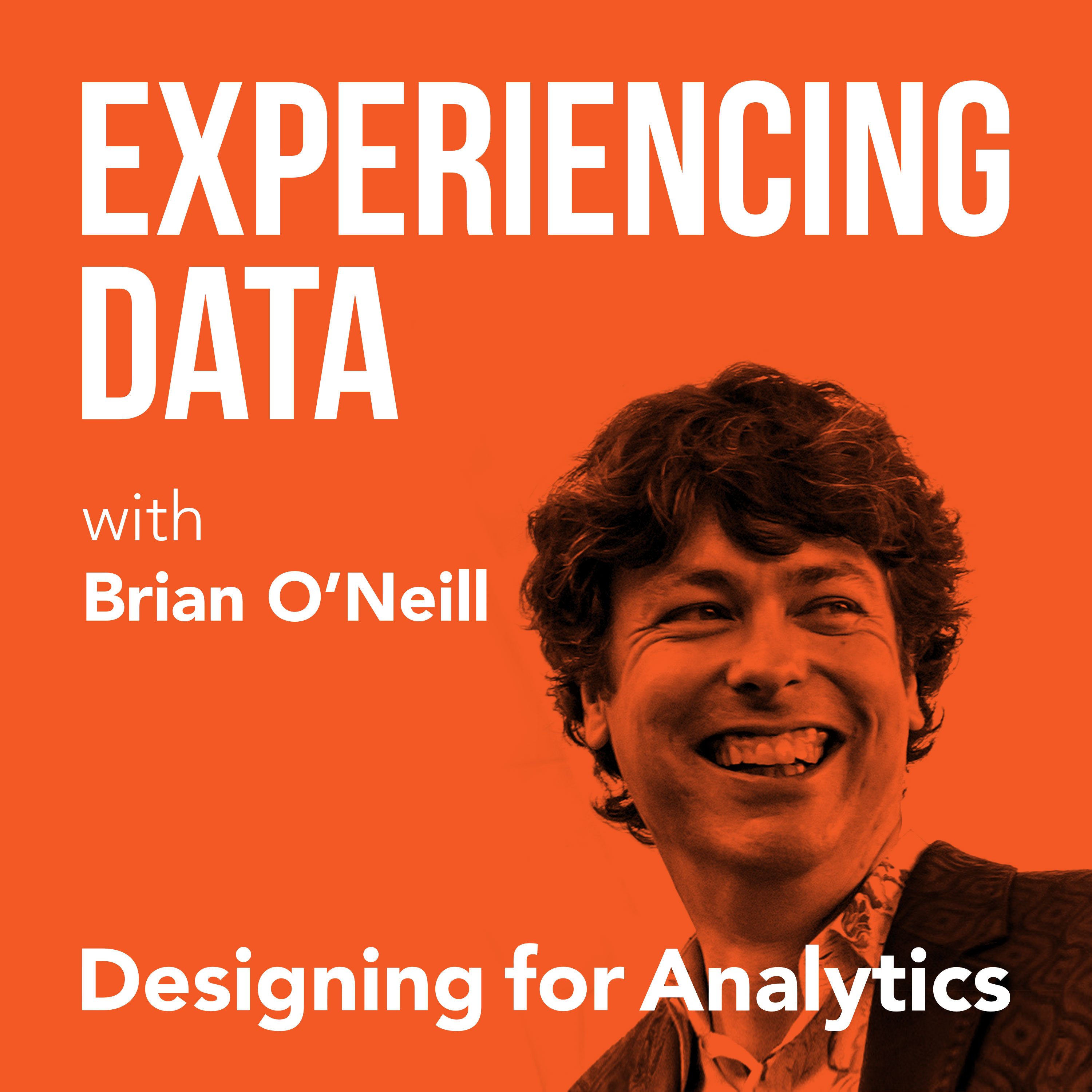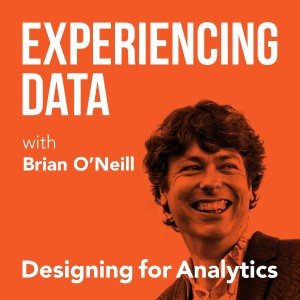

141.5K
Downloads
173
Episodes
Is the value of your enterprise analytics SAAS or AI product not obvious through it’s UI/UX? Got the data and ML models right...but user adoption of your dashboards and UI isn’t what you hoped it would be? While it is easier than ever to create AI and analytics solutions from a technology perspective, do you find as a founder or product leader that getting users to use and buyers to buy seems harder than it should be? If you lead an internal enterprise data team, have you heard that a ”data product” approach can help—but you’re concerned it’s all hype? My name is Brian T. O’Neill, and on Experiencing Data—one of the top 2% of podcasts in the world—I share the stories of leaders who are leveraging product and UX design to make SAAS analytics, AI applications, and internal data products indispensable to their customers. After all, you can’t create business value with data if the humans in the loop can’t or won’t use your solutions. Every 2 weeks, I release interviews with experts and impressive people I’ve met who are doing interesting work at the intersection of enterprise software product management, UX design, AI and analytics—work that you need to hear about and from whom I hope you can borrow strategies. I also occasionally record solo episodes on applying UI/UX design strategies to data products—so you and your team can unlock financial value by making your users’ and customers’ lives better. Hashtag: #ExperiencingData. JOIN MY INSIGHTS LIST FOR 1-PAGE EPISODE SUMMARIES, TRANSCRIPTS, AND FREE UX STRATEGY TIPS https://designingforanalytics.com/ed ABOUT THE HOST, BRIAN T. O’NEILL: https://designingforanalytics.com/bio/
Episodes

Tuesday Jul 27, 2021
Tuesday Jul 27, 2021
As much as AI has the ability to change the world in very positive ways, it also can be incredibly destructive. Sean McGregor knows this well, as he is currently developing the Partnership on AI’s AI Incident Database, a searchable collection of news articles that covers questionable use, failures, and other incidents that affect people when AI solutions are poorly designed.
On this episode of Experiencing Data, Sean takes us through his notable work around using machine learning in the domain of fire suppression, and how human-centered design is critical to ensuring these decision support solutions are actually used and trusted by the users. We also covered the social implications of new decision-making tools leveraging AI, and:
- Sean's focus on ensuring his models and interfaces were interpretable by users when designing his fire-suppression system and why this was important. (0:51)
- How Sean built his fire suppression model so that different stakeholders can optimize the system for their unique purposes. (8:44)
- The social implications of new decision-making tools. (11:17)
- Tailoring to the needs of 'high-investment' and 'low-investment' people when designing visual analytics. (14:58)
- The AI Incident Database: Preventing future AI deployment harm by collecting and displaying examples of the unintended and negative consequences of AI. (18:20)
- How human-centered design could prevent many incidents of harmful AI deployment — and how it could also fall short. (22:13)
- 'It's worth the time and effort': How taking time to agree on key objectives for a data product with stakeholders can lead to greater adoption. (30:24)
Quotes from Today’s Episode
“As soon as you enter into the decision-making space, you’re really tearing at the social fabric in a way that hasn’t been done before. And that’s where analytics and the systems we’re talking about right now are really critical because that is the middle point that we have to meet in and to find those points of compromise.” - Sean (12:28)
“I think that a lot of times, unfortunately, the assumption [in data science is], ‘Well if you don’t understand it, that’s not my problem. That’s your problem, and you need to learn it.’ But my feeling is, ‘Well, do you want your work to matter or not? Because if no one’s using it, then it effectively doesn’t exist.’” - Brian (17:41)
“[The AI Incident Database is] a collection of largely news articles [about] bad things that have happened from AI [so we can] try and prevent history from repeating itself, and [understand] more of [the] unintended and bad consequences from AI....” - Sean (19:44)
“Human-centered design will prevent a great many of the incidents [of AI deployment harm] that have and are being ingested in the database. It’s not a hundred percent thing. Even in human-centered design, there’s going to be an absence of imagination, or at least an inadequacy of imagination for how these things go wrong because intelligent systems — as they are currently constituted — are just tremendously bad at the open-world, open-set problem.” - Sean (22:21)
“It’s worth the time and effort to work with the people that are going to be the proponents of the system in the organization — the ones that assure adoption — to kind of move them through the wireframes and examples and things that at the end of the engineering effort you believe are going to be possible. … Sometimes you have to know the nature of the data and what inferences can be delivered on the basis of it, but really not jumping into the principal engineering effort until you adopt and agree to what the target is. [This] is incredibly important and very often overlooked.” - Sean (31:36)
“The things that we’re working on in these technological spaces are incredibly impactful, and you are incredibly powerful in the way that you’re influencing the world in a way that has never, on an individual basis, been so true. And please take that responsibility seriously and make the world a better place through your efforts in the development of these systems. This is right at the crucible for that whole process.” - Sean (33:09)
Links Referenced
- seanbmcgregor.com: https://seanbmcgregor.com
- AI Incident Database: https://incidentdatabase.ai
- Partnership on AI: https://www.partnershiponai.org
Twitter: https://twitter.com/seanmcgregor
No comments yet. Be the first to say something!